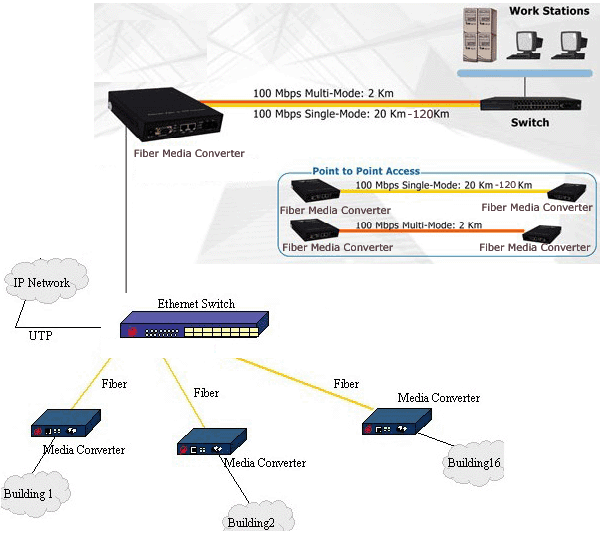-

- Sopto Home
-

- Special Topic
-

- Converter Knowledge
-

- Networks to Converge at 10 Gigabits
Converter Knowledge
- Form Factors and Application of Ethernet Media Converter
- Ethernet over 4 E1 Converter Brief Introduction
- What is the Difference between RS232 and RS485 Serial Interfaces
- What is the Difference between RS232 and RS485 Serial Interfaces
- How to Convert an Analog Telephone to VoIP Protocol?
- How to Find the Internet Protocol Address and Media Access Contr
- How to Convert from Fast Ethernet to Fiber Optics?
- How to Connect a Fiber Converter?
- How to Convert Ethernet to Fiber Media Converters?
SOPTO Special Topic
Certificate



Guarantee
Except products belongs to Bargain Shop section, all products are warranted by SOPTO only to purchasers for resale or for use in business or original equipment manufacturer, against defects in workmanship or materials under normal use (consumables, normal tear and wear excluded) for one year after date of purchase from SOPTO, unless otherwise stated...
Return Policies
Defective products will be accepted for exchange, at our discretion, within 14 days from receipt. Buyer might be requested to return the defective products to SOPTO for verification or authorized service location, as SOPTO designated, shipping costs prepaid. .....
Applications
An Ethernet to Fiber Media Converter can also be used where there is high level of electromagnetic interference or EMI which is a common phenomenon found in industrial plants. This interference can cause corruption of data over copper-based ethernet links. Data transmitted over fiber optic cable however is completely immune to this type of noise. An Ethernet to Fiber Optic Converter therefore enables you to inter-connect your copper-ethernet devices over fiber ensuring optimal data transmission across the plant floor.
SOPTO Products
- Fiber Optic Transceiver Module
- High Speed Cable
- Fiber Optical Cable
- Fiber Optical Patch Cords
- Splitter CWDM DWDM
- PON Solution
- FTTH Box ODF Closure
- PCI-E Network Card
- Network Cables
- Fiber Optical Adapter
- Fiber Optical Attenuator
- Fiber Media Converter
- PDH Multiplexers
- Protocol Converter
- Digital Video Multiplexer
- Fiber Optical Tools
- Compatible
Related Products
Performance Feature
Converter Knowledge
Recommended
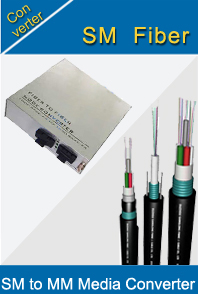
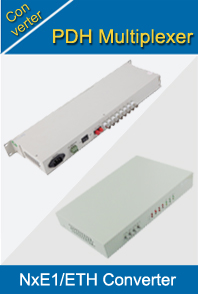
Networks to Converge at 10 Gigabits
Networks to Converge at 10 Gigabits: SANs to Seamlessly Connect with LANs and MANs. Today, general networking, storage networking, and inter-processor communications have each developed different standards. As we move toward a 10 gigabit per- second world, total cost of ownership and interoperability will drive the industry toward a single networking interconnect standard.
In general networking, including all Internet applications—email, web services, downloads and multimedia, including voice and streaming video—interconnect technology is IP over Ethernet at 10 Mb/s, 100 Mb/s and 1Gb/s. Although IP over Ethernet scales across the LAN, MAN, and WAN, and dominates the industry in port count, interoperability, and vendor support, the IP over Ethernet protocol stack (usually TCP/IP) is executed in the host CPU. This makes this architecture unsuitable for latency sensitive applications such as database storage and inter-processor communications.
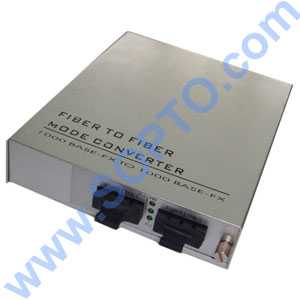 、
、
Storage networking incorporates two applications: Network Attached Storage (NAS), which uses IP over Ethernet to transport data in file formats between storage servers and their clients, and Storage Area Networks (SANs), which transport blocks of data over Fibre Channel. Fibre Channel is the performance leader today at 1Gb/s and 2 Gb/s link speeds, and offers excellent latency characteristics resulting from a fully offloaded protocol stack. This is one reason Fibre Channel-based SANs are often applied in performance sensitive applications while Ethernet- based NAS is used where cost and ease of use are more important.
There are also inter-processor communications (IPC) networks which are used for server clustering. Although generally limited to high availability (HA) clusters, Ethernet is the most widely used IPC interconnect technology today. High performance parallel processing clusters tend to use a proprietary interconnect designed for very low latency. IPC is one of the most important applications targeted by InfiniBand. With an architecture optimized for low latency and high bandwidth, InfiniBand appears ideally suited for this application. Starting down the road to 10Gb/s
The Internet’s insatiable appetite for performance will continue to drive Ethernet development to faster link rates at a quicker pace than Fibre Channel. Where 1-Gigabit Ethernet development leveraged mature Fibre Channel technology, Fibre Channel development will now leverage 10Gb/s Ethernet standards. InfiniBand will be introduced at 2.5Gb/s, but will quickly move up to 10 Gb/s. See Figure 1.
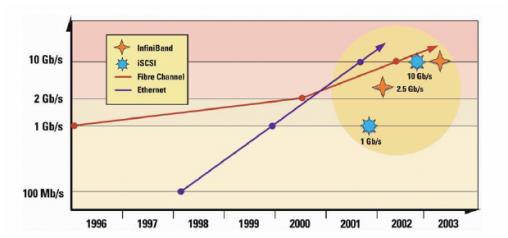
Development Trends
For general networking, there are no serious challengers to Ethernet. CPU utilization will improve dramatically with the application of TCP Offload Engine (TOE) technology, which moves protocol stack execution from the host processor to the I/O card.
The choice of interconnect technology for inter-processor communications also seems to be fairly clear. Designed from the ground up for IPC and destined to be a standard I/O port on many chipsets, InfiniBand is well positioned to dominate large segments of this application. Ethernet with VI (virtual interface)/TCP/ IP in offloaded hardware at 10Gb/s will have excellent latency and throughput characteristics and could challenge InfiniBand for certain segments of the IPC application market.
For more info, please browse our website or contact a Sopto representative by calling 86-755-36946668, or by sending an email to info@sopto.com.

